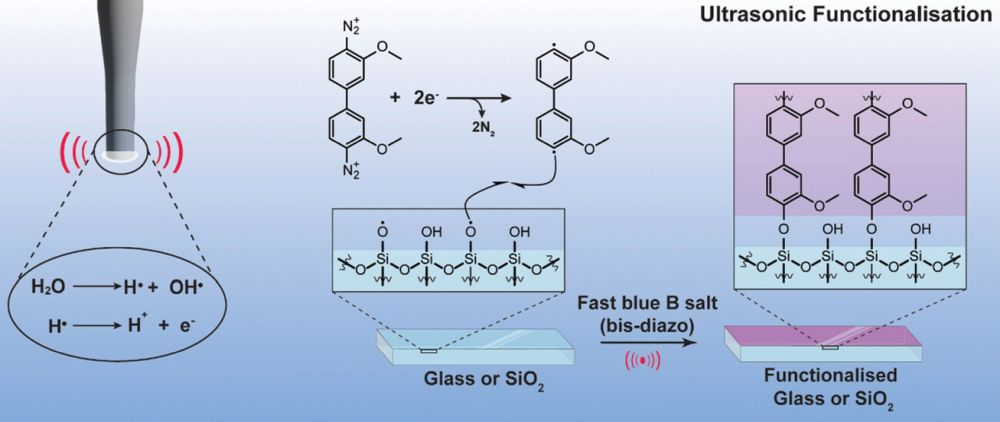
[Image above] Niobium-containing glasses exhibit enhanced optical properties, and so the glasses are being used in next-generation technologies like the smart windows above. However, there is still much to learn about the specific structural role of niobium oxide in glass. Credit: CBMM, YouTube
For a sports team to function efficiently, each member is assigned a specific role, typically split between offensive and defensive positions. The distribution of these roles depends on the skills of the individual players, and an effective balance between offense and defense is not necessarily the same across different teams due to the variance in individual abilities.
Similarly, materials consist of molecules and atoms, each playing a specific role in forming a stable atomic structure. The individual properties of each particle determine how much or how little of it is needed to improve a desired property, such as chemical durability, fracture strength, or refractive index.
In glass science, oxides are considered to fulfill one of three roles within the atomic structure: network former, network modifier, or intermediate oxide. While the first two roles are rather self-explanatory, “intermediate oxide” describes oxides that
- Do not form a glass by themselves under standard laboratory cooling methods unless combined with certain other non-glass formers, and
- Easily vitrify in the presence of good glass-formers or other intermediates, where they contribute by forming bridging oxygens.
The effect that intermediate oxides have on glass formation and the resulting properties is often significant. So, understanding their structural role and their effect on glass properties is essential for developing effective material models.
Niobium oxide (Nb2O5), which was recently identified as an intermediate oxide, has garnered significant attention in various fields due to its impact on glass properties. It influences a glass’s refractive index and nonlinear optical properties, making niobium-containing glasses desirable for electro-optical applications. Moreover, Nb2O5 shows promise in enhancing the mechanical properties of bioactive glasses while retaining their bioactivity.
Despite this knowledge about the macroscopic properties of niobium-containing glasses, the structural role of Nb2O5 remains elusive, primarily due to the limited amount of spectroscopic characterization data.
In a recent study, researchers from Brazil and China, led by ACerS Fellow Edgar D. Zanotto, senior professor at Federal University of São Carlos and director of the Center for Research, Technology, and Education in Vitreous Materials (CeRTEV), and Hellmut Eckert, professor at the University of São Paulo and vice-director of CeRTEV, looked to address this knowledge gap.
The authors of the study include post-doctoral fellows Henrik Bradtmüller (Federal University of São Carlos) and Anuraag Gaddam (University of São Paulo), and Qilu University of Technology professor Qiuju Zheng.
Bradtmüller gathered data about the niobium-containing silicate glasses at CeRTEV using nuclear magnetic resonance (NMR) and Raman spectroscopy. Gaddam then used computational modeling—specifically comparative molecular dynamics and Monte Carlo simulations—to interpret the results.
The researchers drew several important conclusions about the structural role of Nb2O5 in silicate glasses. Specifically,
- The addition of niobium oxide to silicate glasses leads to a higher degree of polymerization of the siliceous network, which increases bond density and network connectivity. As a result, the glasses’ thermal and chemical stability improves.
- A higher niobium content in the glass induces clustering of the niobium oxide component, which enhances the electronic polarizability of the glass. This effect has a key impact on the glasses’ optical properties.

Nuclear magnetic resonance graph showing how the addition of more niobium oxide to silicate glasses leads to a higher degree of polymerization (more Q4) of the siliceous network. Credit: Henrik Bradtmüller
In the discussion section of the paper, the researchers highlighted the need for further experimental work to enhance the modeling of the NMR data.
“Owing to the intrinsic nature of the glassy state, the NMR parameters are not uniquely defined by singular values as they are in crystals but are subject to distribution functions that greatly impact the NMR spectra,” they explain.
Nevertheless, “Our strategy, combining NMR and Raman spectroscopy with computational modeling, holds promise for studying many other functional elements in many other glass types, including optical materials, bioactive glasses, and glassy fast ion conductors, containing suitable NMR-active nuclear probes,” they explain in an email.
The paper, published in Acta Materialia, is “Structural impact of niobium oxide on lithium silicate glasses: Results from advanced interaction-selective solid-state nuclear magnetic resonance and Raman spectroscopy” (DOI: 10.1016/j.actamat.2023.119061).
Author
Lisa McDonald
CTT Categories
- Basic Science
- Glass
- Modeling & Simulation


